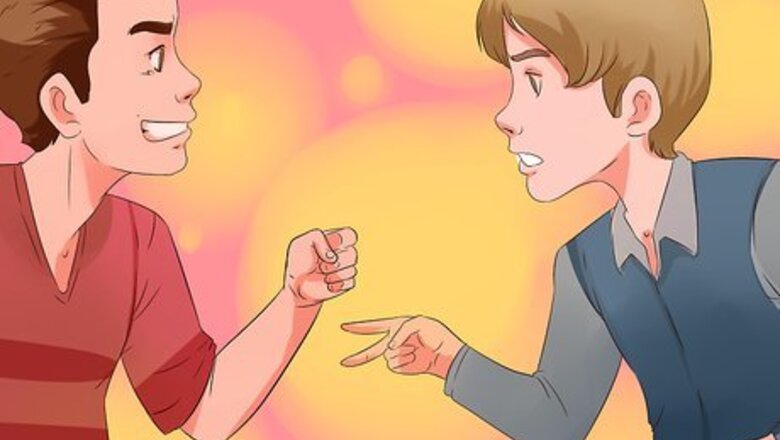
views
Playing Silly Sentence Games

Decide who goes first. Get together in a group of two or more friends. Play Nose Goes or Rock Paper Scissors to decide who goes first. You can also just take turns starting each sentence.

Ask the first person to say a noun. This will start the sentence. A noun can be a person (like "Fred" or "a doctor"), a place ("the zoo" or "England"), or a thing ("potatoes" or "the floor").
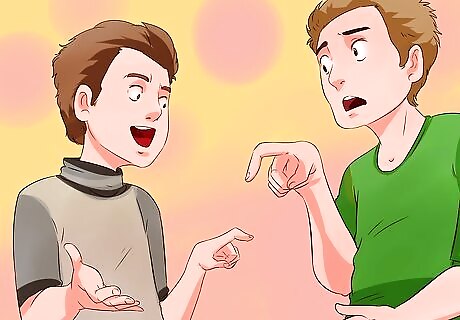
Have each person add words to the sentence. Each person who plays the game adds another word to the sentence. For example: Amy says "Fred" Bob says "Fred likes" Camille says "Fred likes green" Amy says "Fred likes green bacon" Bob says "Fred likes green bacon because" Camille says "Fred likes green bacon because ___" (pick the next word yourself!)

Save your favorites. Keep playing until the sentence is too long to remember, or until you think it sounds good enough. Play more rounds, and write down your favorites to save and laugh at later. You can also try writing a whole "silly story" with your friends, where each person writes one sentence.
Teaching Sentence Structure with Silly Sentences
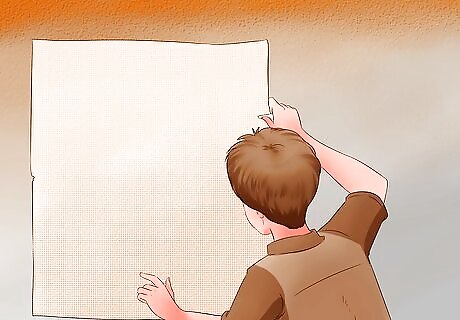
Write sentence subjects on large pieces of paper. You can use markers to write these nouns yourself, or use a computer to type them in an extra-large font size, then print them. Choose a color to write the subjects in, such as blue. Cut the paper so each noun is on its own section. For example, write The clown; The dog; The president; The tiger; and Ms. Smith. Make sure the nouns are either all singular or all plural, so they can all be used with the same verb forms.
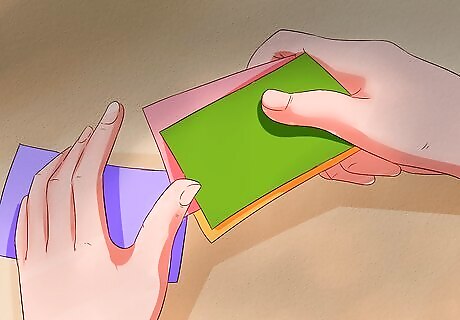
Make color-coded cards for other parts of speech. The most basic sentence structure lesson can just use subjects (nouns) and predicates (verb phrases). If your students are more advanced, you can add additional sentence components like adverbs or possessive pronouns. Color-code each category of cards differently, to make it easier for the students. For example: For beginning grammar students, just write predicates in orange, like jumped on the table; laughed; drew a picture; and flew to the moon. For intermediate classes, add adverbs (quickly; happily; loudly), and/or adjectives (silly; red; big). For more advanced classes, break the predicate into verb phrases, and a second stack of noun cards.

Laminate the cards (optional). After you've printed and cut out the words, laminate them at your school office or a copy shop. This is optional, but will let you keep these cards sturdy and reusable for years, even when young kids are using them.
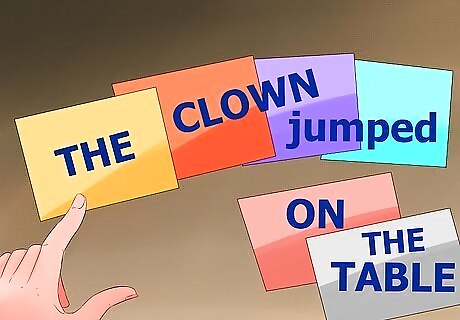
Show your students how to make silly sentences. Pile the cards up by color, in a stack on the floor or in the pockets of a wall organizer. Demonstrate to your class how to take one card from each stack, and put them next to each other to form a "silly sentence." The sentences don't have to be realistic, but they should have all the parts of the sentence in the right order. For example, The clown jumped on the table. is a good silly sentence, since the subject and predicate are in the right order.
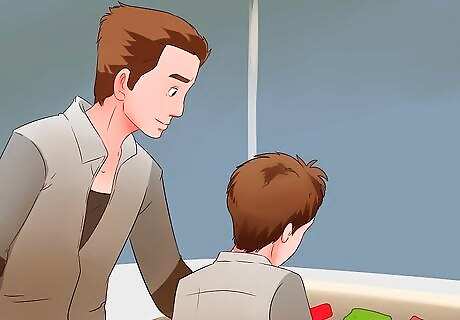
Check on your students' work. This can be an activity students do in small groups of 3–5, or individually whenever they have play time or individual work time. Have them leave out their sentences for you to check on. Praise the students when they get a sentence right, and help them understand the right order if they make a mistake. If a student loves a sentence he wrote, or if he needs encouragement, you can save his silly sentence on a board for all the students to read and have fun with.
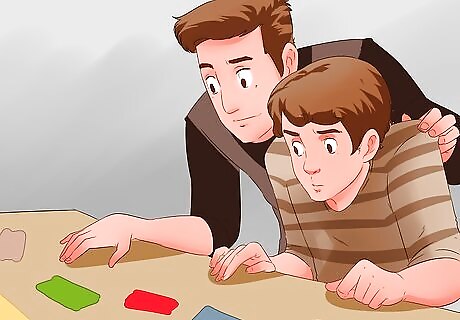
Help students out. If a student doesn't understand, explain that the sentence can be put together by answering two questions: "Who?" and "did what?". Here's an example: Teacher: Let's make a sentence about someone doing something. Who did something? Pick a card. Student: (picks "the dog") Teacher: "Great! Let's make a sentence about a dog. What did the dog do? Pick a card that makes sense in this sentence: the dog __." Student: Jumped? Teacher: That's right. Now put these cards next to each other: the dog jumped." Try making a new sentence.
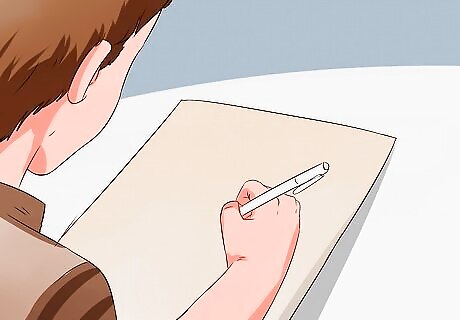
Have the students draw pictures (optional). Students who are visual learners, or who enjoy drawing, might be more interested in this game if they get to draw a picture of the silly sentence they came up with. You can also put these pictures up on the wall, so your students can enjoy their silly drawings.

Ask your students for suggestions. If your students like the silly sentence game, ask them to think of more subjects and predicates (or "nouns and verbs," or "things and actions," depending on the terms the students know). Print these out and bring them to class, so the students can make more silly sentences using their favorite words.
Teaching Sounds with Silly Sentences
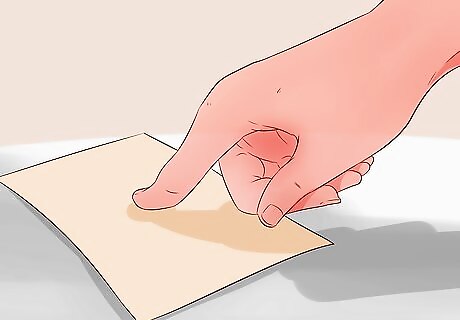
Pick a letter the student is having trouble with. This kind of silly sentence is great for students who are learning how to read, especially if they are having trouble understanding phonics, or teaching reading by connecting written letters to sounds. Pick one letter at a time, such as "P."

Write or find sentences that focus on this letter. Write a sentence that uses the letter many times, using clear handwriting or typing. Make sure the letter is pronounced the same each time it shows up, or the student could get confused. It can be especially helpful to use words that begin with the letter. For example, write "Pigs play in parks and pamper Penelope with nail polish." Search online for "silly phonics sentences" for examples, such as this free example.
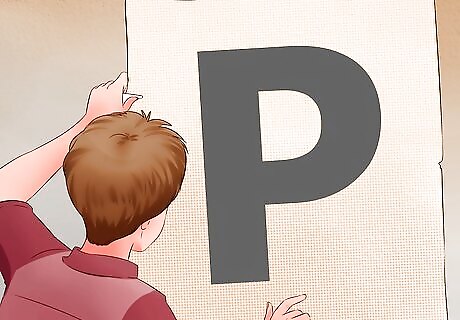
Make a large image of the letter. Draw the letter you've chosen (P in our example) on a large piece of paper, but keep it small enough that the student could sit next to it and trace over it without standing up.
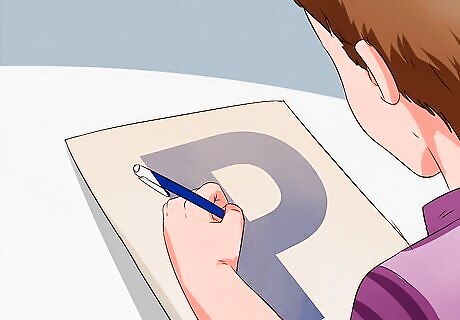
Add texture to the letter. The student may learn better if there is a texture to associate with the letter. You can use dried-on white glue, glued-on sand, or any other material. Rough materials are best, since they will force the student to use more effort and movement when tracing, helping the student's memory. If you plan to make a silly sentence for several different letters, try using a material that begins with that letter. For example, glue pepper (black peppercorns) onto the P, and sand onto the S.

Add pictures for the words in the sentence. Reinforce the meaning of the word by placing a picture above each word that begins with the chosen letter. For instance, place a picture of a pig above the word "pig." You can draw these pictures yourself if you are able to make them clear to the student, or find and print them from free art online.

Have the student trace the letter as he reads the sentence. Give the student a spoon, a stick, or another rough object, and have the student trace the outline of the letter slowly, moving his arm and shoulder. Repeat this as you help the student read each word of the sentence. Ask the student what each word is, then read it aloud. Say the letter you are focusing on with the student, as the student traces the letter. Repeat this for each word in the sentence. This practice is designed to give the student as much encouragement as possible to remember and learn the letter.




















Comments
0 comment